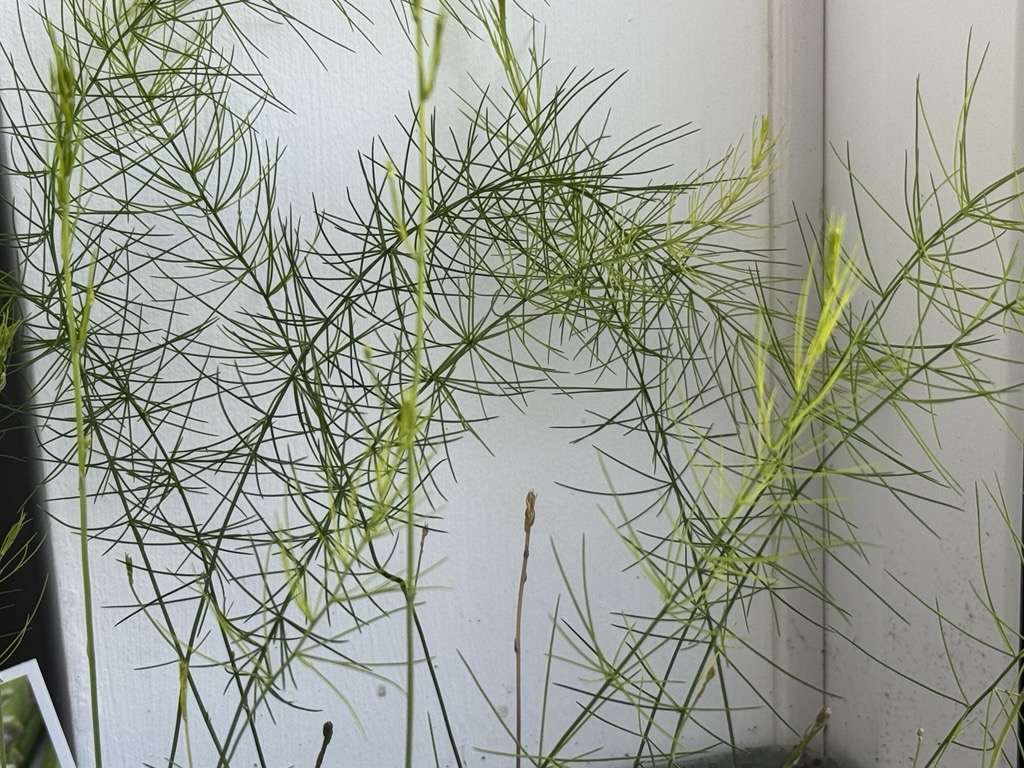Gardening is all about learning, and my recent foray into growing asparagus has been a valuable lesson in planning and research. Here’s my story and the key takeaways from this short stint.
The Initial Plan
As a novice gardener in Scotland, I was on the hunt for vegetables that thrive in our cool, damp climate. Given our limited variety of veggies at home, I was looking for something we enjoy and that would return year after year with minimal effort. Asparagus stood out for several reasons:
- It’s an extravagant expense at the grocery store.
- Google says it’s extremely healthy.
- It’s a perennial, promising a bountiful harvest year after year.
The First Mistake: Starting with Seeds
Excited by the idea, I bought some asparagus seeds and started them indoors. It wasn’t long before I realized that starting with seeds is a bit like training a marathon runner from scratch—it takes patience! Asparagus can take up to three years to produce a significant harvest from seeds. A better approach would have been to start with dormant crowns, which are more mature and can produce edible spears much sooner. Lesson learned: go for the seasoned athletes!
The Second Mistake: Not Checking Soil and Light Conditions
I visited Dobbies and bought some asparagus crowns, thinking I had solved the problem. However, further research revealed two more challenges:
- Clay Soil: Asparagus doesn’t do well in clay soil, which is what I have in my garden. It needs well-drained, loose soil to thrive. Oops, my soil is more like a mud pie!
- Sunlight: Asparagus requires plenty of sunlight. I do have two strips of garden that receive good sun, but one is close to a wall, and the other is close to a fence. The area near the fence already has roses and clematis, and asparagus has an extensive root system that would compete with the roses. The area near the wall is also not ideal because I’m worried the extensive root system might damage the wall in the long run. I don’t want to unintentionally decrease the property value with overzealous roots!
The Decision
After careful consideration, I realized that my garden wasn’t the right place for asparagus. The extensive root system and the need for well-drained soil and ample sunlight made it impractical.
- Crowns: I decided to return the crowns to Dobbies, as they are not suitable for my garden conditions. Back to the store, little guys!
- Seedlings: My seedlings are still sitting in my study, and I’m contemplating what to do with them. I might try growing them in large containers with well-drained soil to see if they can thrive. Container gardening to the rescue!
Lessons Learned
- Plan Before You Buy: Take the time to measure and plan your garden layout and understand the space and conditions you have available. A little forethought goes a long way!
- Research Thoroughly: Before buying any plants, research their specific needs, including sun and soil, and ensure your garden can meet those requirements. Google is your friend, but so is your local gardening center!
- Start with Mature Plants: For slow-growing perennials like asparagus, starting with mature crowns can save time and effort. Sometimes, it’s better to start with a head start!
Moving Forward
While my asparagus adventure didn’t go as planned, I’ve learned valuable lessons that will help me in future gardening projects. I’m excited to continue exploring what I can grow successfully in my garden and share more of my experiences with you. Gardening is a journey, not a destination!
Stay tuned for more gardening updates, and feel free to share your own gardening stories and tips in the comments below! I’d love to hear about your gardening adventures and any tips you have for container gardening.

